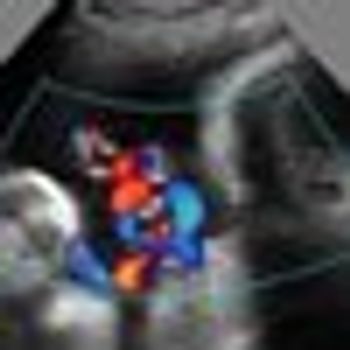
Each year, between 300 and 400 physicians in the United States die by suicide, and physicians seek care for depression and other mood disorders at lower rates than the general public.

Each year, between 300 and 400 physicians in the United States die by suicide, and physicians seek care for depression and other mood disorders at lower rates than the general public.

This woman presented with severe pelvic pain in her third trimester. What's your diagnosis?

Acute or chronic pelvic pain is often due to musculoskeletal disorders, which may go unrecognized during a traditional pelvic examination. Proper evaluation facilitates the diagnosis of spasm or trigger points, and physical therapy often achieves a major improvement in quality of life for these women.

As robotic laparoscopic surgery becomes more common, the debate over safe positioning continues. Discover the keys to safe positioning.

Plaintiff claimed that due to failure to timely deliver secondary to prolonged shoulder dystocia and cord compression, the infant suffered a hypoxic ischemic insult at delivery with concordant seizure activity, anoxia, and catastrophic brain injury.

Recent court cases have given rise to the question: does anyone have the right to patent genes?

In this protocol, Dr. Higgins reviews the pathophysiology, diagnosis, and treatment of hypoxic ischemic encephalopathy (HIE).

Managing a cesarean delivery in a morbidly obese woman presents some challenges. Here's some information to help tackle those challenges.

Women and men gain weight when they eat a high-fat diet and during midlife.

Circumcision of male infants provides benefits that outweigh the risks, according to a recent policy statement from the Task Force on Circumcision of the American Academy of Pediatrics (AAP) endorsed by the American College of Obstetricians and Gynecologists (ACOG).

Some studies in the literature have questioned the benefit of mammographic screening in reducing breast cancer mortality.

ACOG recently issued a practice bulletin for abnormal uterine bleeding. A member of Contemporary OB/GYN's editorial advisory board discusses how the terminology surrounding abnormal uterine bleeding is both confusing and without any form of standardization.

Global healthcare opportunities are desired additional to residency programs by many academic institutions, but there has been no attempt to describe the optimal program. Here's one potential model.

Current evidence does not support administering pneumococcal vaccination to women who are pregnant to prevent infection in their newborns, finds a systematic review.

Researchers in France have developed a nomogram based on pathological hysterectomy characteristics to predict lymph node metastasis in patients with endometrial cancer.

This is the case of a 30-week pregnancy for which the mother underwent routine sonography.

Only 11% of Americans have a high level of understanding of the key aspects of federal health reform, despite substantial media coverage in the 2-plus years since the legislation's passage.

A large population-based Australian cohort study suggests that incidence of pregnancy-associated cancer may be on the rise and suggests a link between multiple gestation and large-for-gestational age (LGA) size at birth. Published in BJOG An International Journal of Obstetrics and Gynaecology, the study finding of increased incidence is only partially explained by increases in maternal age.

The FDA recently announced that an ultrasound (U/S) device for breast cancer screening– the somo-v ABUS–has been approved for use in women with dense breasts.

A prospective case series analysis has shown that single incision laparoscopic surgery is a technique that is both feasible and safe for the surgical management of a variety of gynecological conditions.

A pilot program is dispensing birth control and emergency contraception to students at 13 NYC high schools without informing their parents. Is this a good idea?

This 15-year-old girl had irregular menses.What is your diagnosis?

More than 25% of women may exhibit symptoms of post-traumatic stress disorder (PTSD) after childbirth, a new study reports.

Electronic health record (EHR) systems affect small-practice physicians’ workflows mostly negatively, whereas their staff members’ workflows are generally improved, according to recently published research.

A longitudinal study of more than 10,000 children born in the United States suggests that maternal depressive symptoms are connected to growth patterns in preschool- and school-aged children. The research, by investigators from the Johns Hopkins Bloomberg School of Public Health, underscores the importance of prevention, early detection, and treatment of depression in the first year postpartum.

Compared with conventional clamping and suturing, the use of electrosurgical bipolar vessel sealing (EBVS) during vaginal hysterectomy was associated with shorter operating time and less postoperative pain, according to results of a new study.

The FDA has approved a new ultrasound device to detect breast cancer in women with dense breasts. It will be used in conjunction with standard mammography in asymptomatic women with a negative mammogram.

A new prenatal blood test for trisomy 21 has been released in Europe, and it's targeted to women in their 12th week and beyond. Is it a good thing?

Name the anomaly in this 11-week fetus.

Obesity does not impact perioperative outcomes in women undergoing robotic hysterectomy, according to a recent study.